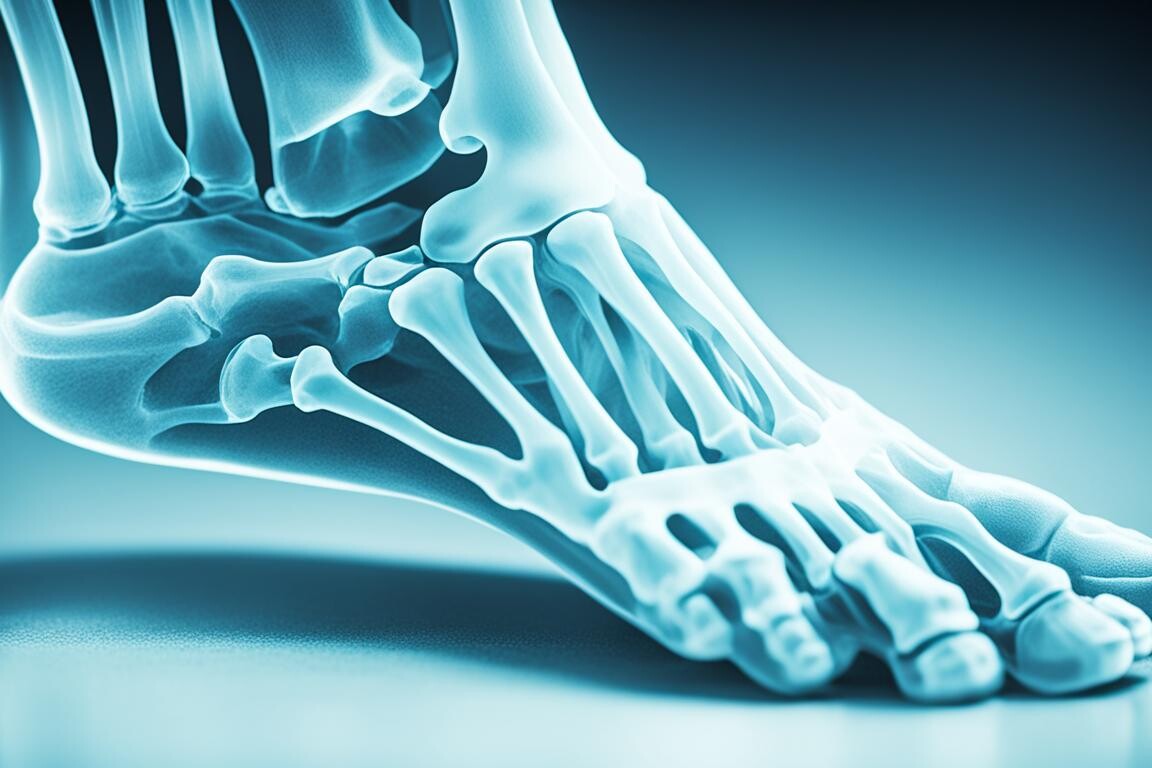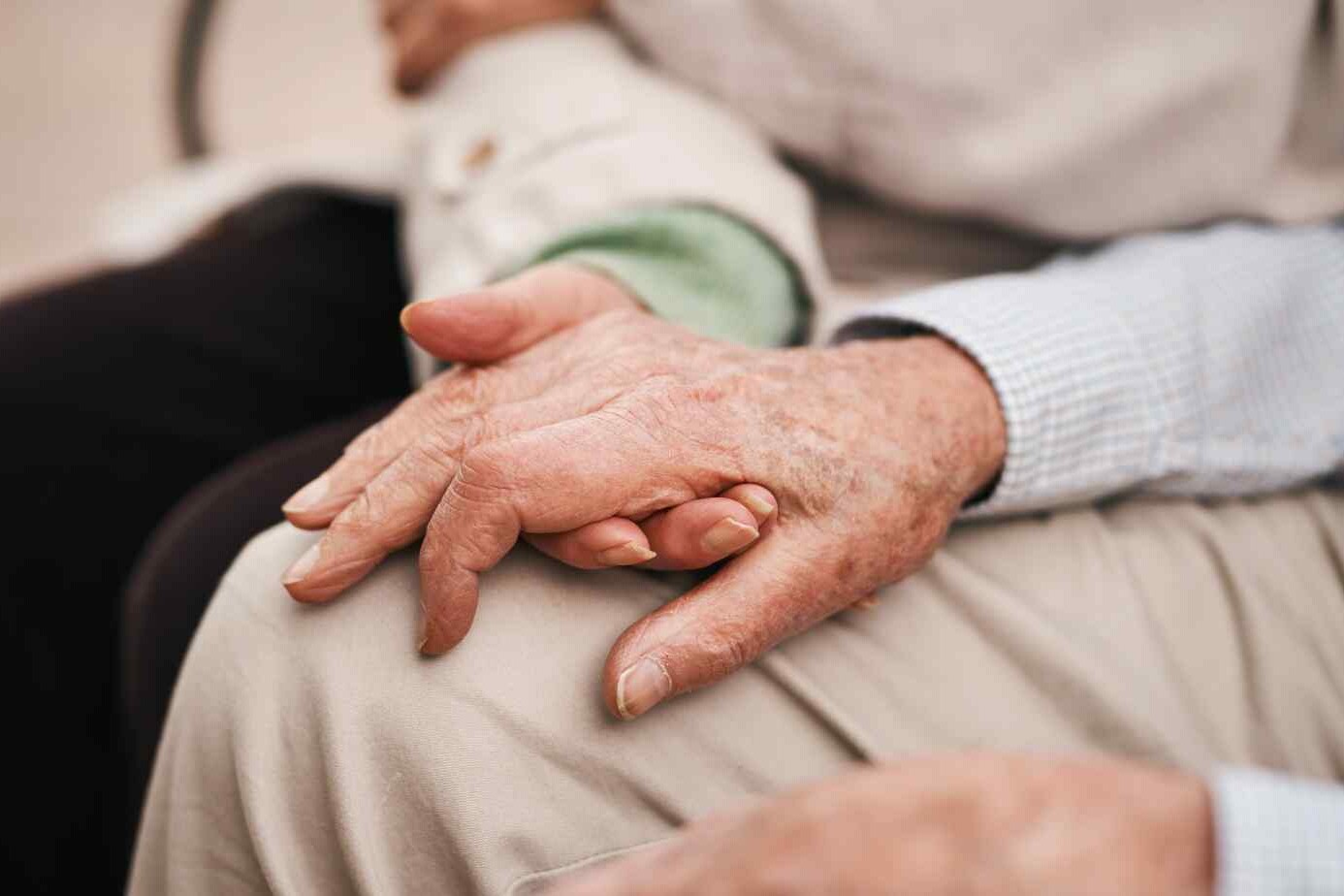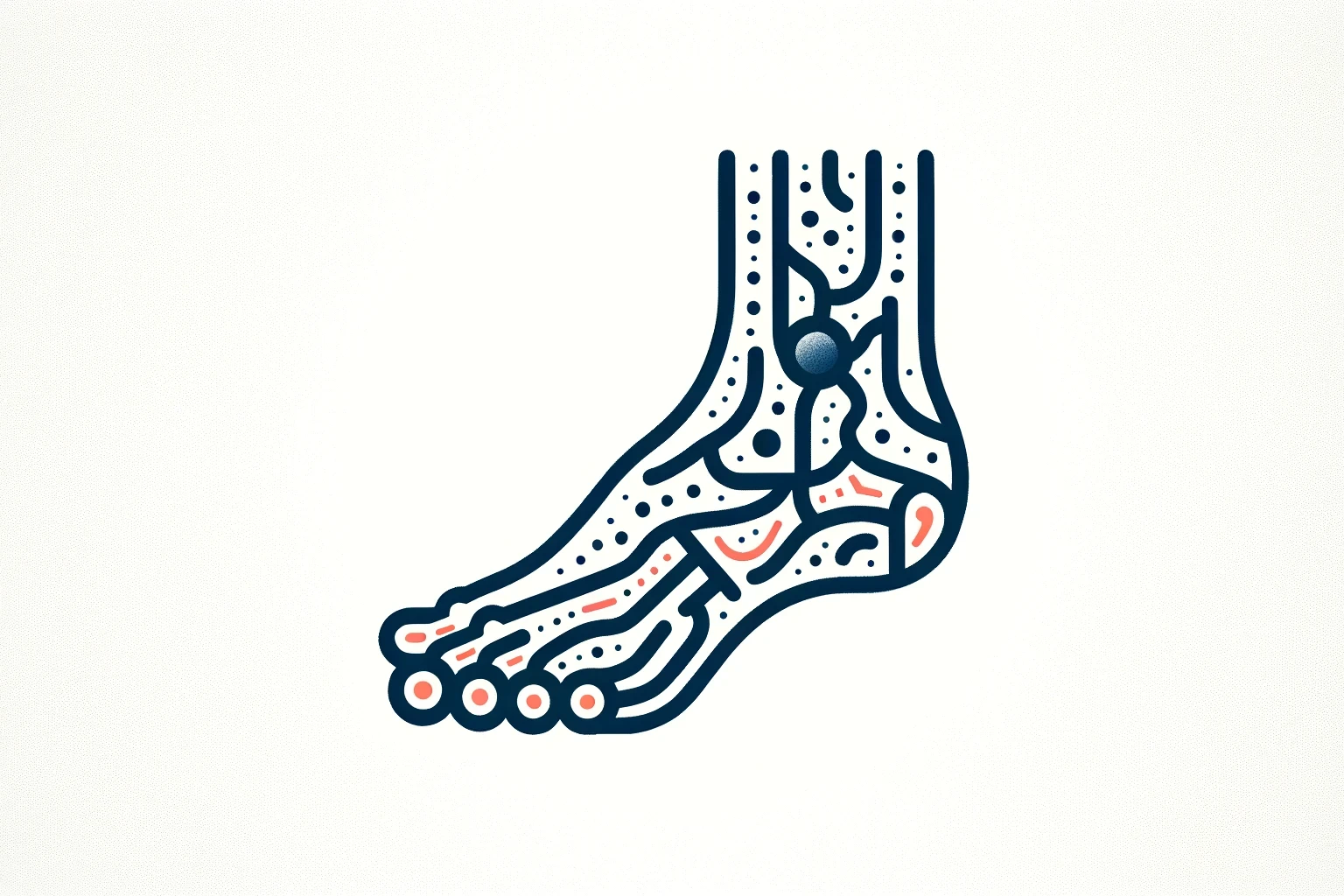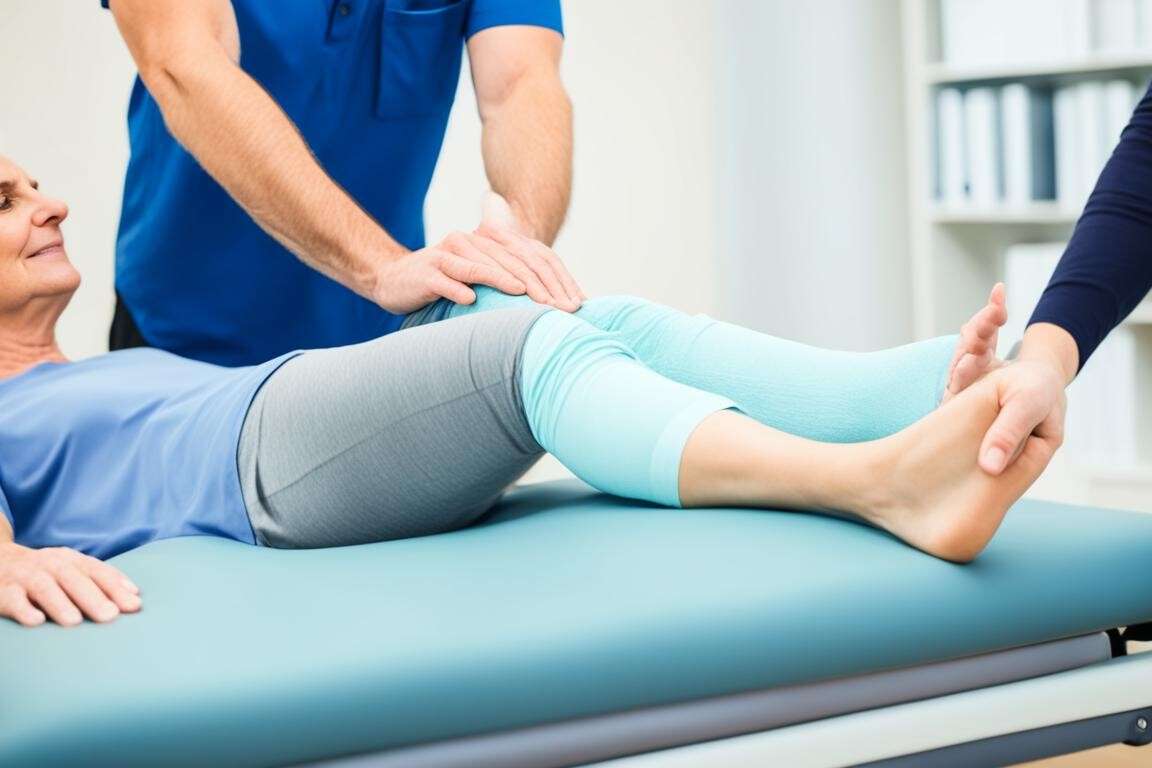Welcome to our article on Charcot Marie Tooth Disease Type 2 (CMT2), a subtype of CMT that affects the peripheral nerves. CMT2 is characterized by peripheral neuropathy, which involves damage to both motor and sensory nerves. This condition can lead to progressive muscle weakness and various symptoms associated with peripheral nerve dysfunction.
In this blog, we’ll break down Charcot Marie Tooth Disease Type 2 in the simplest way possible. We’ll explore its causes, symptoms, diagnosis, treatment options, and real-life ways to manage it. Let’s dive in so you feel more prepared, informed, and empowered.
What is Charcot Marie Tooth Disease Type 2?
Charcot Marie Tooth Disease Type 2 is a genetic condition that affects your peripheral nerves—the ones that connect your spinal cord to your arms, legs, and feet. Over time, this condition causes those nerves to stop working properly, leading to muscle weakness, balance problems, and nerve pain. It belongs to a bigger group of disorders known as Charcot Marie Tooth (CMT) diseases.
Overview of Charcot Marie Tooth Disease (CMT)
CMT is one of the most common inherited nerve disorders. But don’t let the word “common” fool you. It’s still considered rare, and many doctors misdiagnose it as something else.
- CMT is split into two main types: CMT1 and CMT2.
- CMT1 involves damage to the protective covering of the nerve (myelin).
- CMT2 involves damage to the nerve fiber itself (axon). That’s why it’s called axonal neuropathy.
CMT2, specifically, is slower and less severe in nerve conduction but still impacts daily life just as much.
Defining Charcot Marie Tooth Disease Type 2
So what makes Charcot Marie Tooth Disease Type 2 unique?
- It damages the nerve axons (the inner part of the nerve).
- This type is passed through families (genetic).
- It starts showing signs in late childhood or adulthood.
Unlike CMT1, which mainly affects the myelin sheath, CMT2 leads to direct loss of nerve signals. That’s why muscle weakness becomes noticeable.
How Rare is CMT2?
You may wonder, how many people live with this?
- Globally, CMT affects about 1 in 2,500 people.
- Out of those, Charcot Marie Tooth Disease Type 2 makes up about 20% to 30%.
That means it’s not extremely rare, but many people go undiagnosed or misdiagnosed for years.
| CMT Type | Prevalence | Key Difference |
|---|---|---|
| CMT1 | 70-80% | Myelin damage |
| CMT2 | 20-30% | Axon damage |
Table of Contents
ToggleSymptoms of Charcot Marie Tooth Disease Type 2
You may feel something is wrong before you even get a diagnosis. The signs can be subtle at first but grow more noticeable over time.
Early Signs and Red Flags
- Weakness in feet and ankles
- High arched feet
- Trouble lifting the foot while walking (foot drop)
- Hand weakness in some cases
Most children are active and playful, but these early signs make basic activities hard. That’s when many parents start noticing a problem.
How Symptoms Progress Over Time
- The weakness spreads slowly from feet to legs
- Balance issues increase
- Arms and hands can get weaker later
- May lead to muscle atrophy in legs
Compared to CMT1, the nerve signal speed in CMT2 is not as slow, but the signal strength is much weaker.
Differences Between CMT2 and Other Neuropathies
Unlike diabetes-related neuropathy, Charcot Marie Tooth Disease Type 2 is genetic and lifelong.
- CMT2 affects motor nerves more than sensory ones.
- Patients often maintain feeling but lose muscle control.

| Symptoms of CMT2 | Description |
|---|---|
| Distal Weakness | Weakness in the legs, ankles, and feet that makes walking difficult. |
| Foot Deformities | High foot arches, curled toes (hammertoes), and other foot abnormalities. |
| Muscle Atrophy | Loss of muscle bulk and muscle wasting in the affected areas. |
| Sensory Loss | Decreased sensation or loss of feeling in the legs and feet. |
Causes and Inheritance of Charcot Marie Tooth Disease Type 2
Now let’s understand what causes Charcot Marie Tooth Disease Type 2. Since it’s a genetic neuropathy, the reason lies in our DNA.
How CMT2 is Inherited
Most cases of CMT2 are passed down through families in an autosomal dominant way.
- You only need one parent with the faulty gene to inherit it.
- Both boys and girls can be affected equally.
- If a parent has it, there’s a 50% chance the child will too.
Some of the main genes involved are:
- MFN2 gene mutation (most common in CMT2A)
- GARS
- NEFL
Types of CMT2 Based on Genes
Different genes lead to different types of Charcot Marie Tooth Disease Type 2:
- CMT2A – The most common type; linked to MFN2
- CMT2B – Affects sensory nerves
- CMT2D – Affects hand muscles
- Others – CMT2E, CMT2F, etc.
Each type shows slightly different symptoms, but the overall pattern remains similar: slow nerve decline, especially in the legs and hands.
The Role of Mitochondria in Nerve Damage
Especially in CMT2A, the mitochondria (tiny powerhouses in cells) don’t work well. This makes it harder for nerves to stay healthy and send signals.
According to Neurology Journal, 2024, “CMT2A accounts for nearly 20% of all CMT2 cases, with MFN2 mutation being the primary cause.”
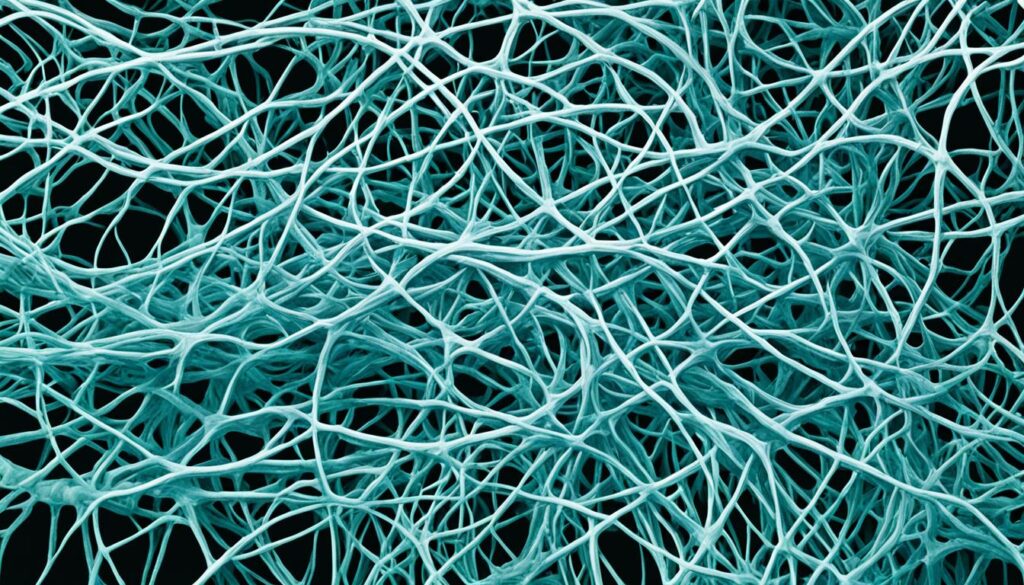
Diagnosis and Treatment of Charcot Marie Tooth Disease Type 2
The diagnosis of Charcot Marie Tooth Disease Type 2 (CMT2) starts with a detailed medical and family history, along with a comprehensive neurological examination. This examination assesses muscle strength, reflexes, sensation, and coordination. Additionally, further tests may be carried out to confirm the diagnosis, such as a nerve conduction study or a muscle biopsy.
In a nerve conduction study, small electrodes are placed on the skin to measure the speed at which electrical impulses travel through the nerves. This test helps to evaluate the efficiency of nerve communication and identify any abnormalities. A muscle biopsy involves removing a small sample of muscle tissue for microscopic examination. This test can help determine if there is any loss or damage to muscle fibers.
While there is currently no cure for CMT2, treatment options focus on symptom management and improving overall quality of life. A multidisciplinary approach may be adopted, involving various healthcare professionals, including neurologists, physiotherapists, orthopedic specialists, and genetic counselors, depending on the individual’s specific needs.
Physical therapy plays a crucial role in CMT2 treatment. It aims to improve muscle strength, coordination, and mobility. Specific exercises and techniques may be recommended to target weakness, enhance balance, and optimize overall functioning. Orthopedic devices, such as braces or splints, may also be prescribed to provide support, correct foot deformities, and improve gait stability.
Pain management strategies are essential for individuals experiencing discomfort associated with CMT2. This may involve nonsteroidal anti-inflammatory drugs (NSAIDs), pain medications, or other therapies to alleviate pain and improve overall well-being.
As CMT2 can affect the peripheral nerves in the lower limbs, assistive devices like canes, walkers, or ankle-foot orthoses (AFOs) may be recommended to aid in walking and maintain stability.
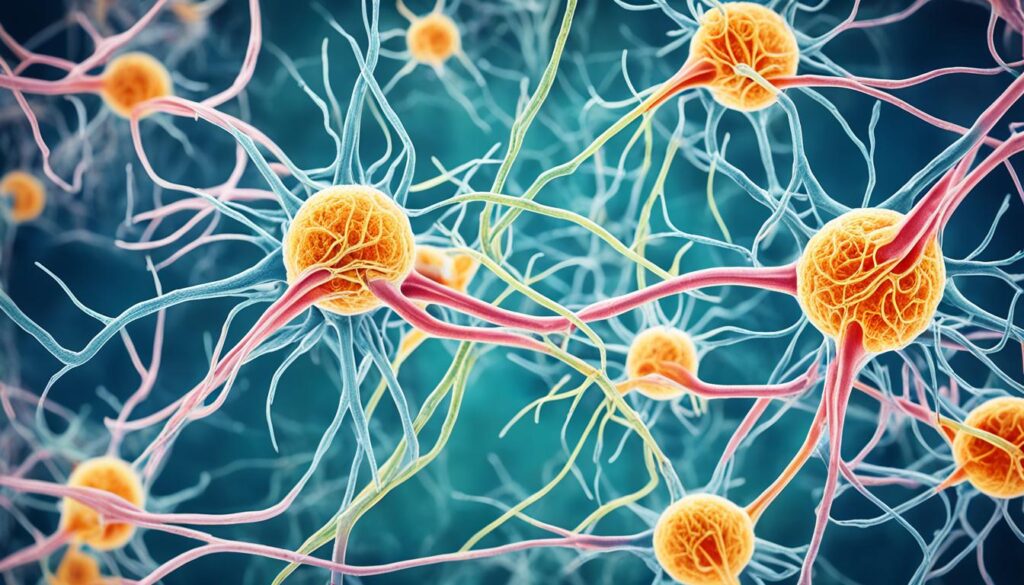
| Treatment options for CMT2 | Benefits |
|---|---|
| Physical therapy | – Improves muscle strength and coordination – Enhances mobility and balance – Optimizes overall functioning |
| Orthopedic devices (braces, splints) | – Provides support for foot deformities – Corrects gait abnormalities – Improves stability |
| Pain management | – Alleviates discomfort and pain – Enhances overall well-being |
| Assistive devices (canes, walkers, AFOs) | – Aids in walking and stability – Reduces the risk of falls – Supports mobility |
It is important for individuals with CMT2 to work closely with their healthcare team to develop a personalized treatment plan. Regular follow-up appointments and periodic assessments may be necessary to monitor disease progression and adjust treatment approaches accordingly.
Other Types of Charcot Marie Tooth Disease
Charcot Marie Tooth Disease (CMT) is a group of inherited disorders that affect the peripheral nerves. While Charcot Marie Tooth Disease Type 2 (CMT2), which we discussed earlier, primarily involves damage to the nerve axons, there are other subtypes of CMT, each with its own distinctive characteristics.
CMT1: Abnormalities in the Myelin Sheath
CMT1 is characterized by abnormalities in the myelin sheath, the protective covering around the nerve fibers. These abnormalities lead to ineffective nerve signal transmission, resulting in muscle weakness and sensory impairment. CMT1 is the most common form of CMT, accounting for approximately 50-70% of all cases. Genetic mutations in genes such as PMP22, MPZ, and GJB1 are associated with CMT1.
CMT3: Severe Demyelinating Neuropathy
CMT3, also known as Dejerine-Sottas disease, is a severe form of demyelinating neuropathy that typically manifests in infancy or early childhood. This subtype is characterized by progressive muscle weakness, sensory loss, and impaired reflexes. The progression of symptoms in CMT3 is usually more rapid and pronounced compared to other subtypes of CMT. Genetic mutations in genes such as PMP22, MPZ, EGR2, and PRX are associated with CMT3.
CMT4: Demyelinating and Axonal Neuropathies
CMT4 encompasses several subtypes of demyelinating and axonal neuropathies, each with its own distinct features. These subtypes exhibit a range of symptoms including muscle weakness, sensory loss, foot deformities, and varying degrees of disease severity. Genetic mutations in genes such as GDAP1, MTMR2, SH3TC2, and PRX are associated with CMT4.
CMTX1: X-linked Form of CMT
CMTX1 is an X-linked form of Charcot Marie Tooth Disease that affects both males and females. This subtype is caused by mutations in the GJB1 gene, which provides instructions for making a protein called connexin 32. CMTX1 is typically characterized by muscle weakness and atrophy in the lower limbs, as well as sensory loss and foot deformities. Because CMTX1 is inherited in an X-linked pattern, males are typically more severely affected than females.
In summary, Charcot Marie Tooth Disease encompasses several subtypes, each with its unique genetic mutations and clinical features. Understanding these different subtypes is crucial for accurate diagnosis and targeted treatment approaches.

Conclusion
Charcot Marie Tooth Disease Type 2 (CMT2) is a subcategory of Charcot Marie Tooth Disease that primarily affects the nerve axons, leading to distal weakness, sensory loss, and muscle atrophy. Although there is currently no cure for CMT, effective management strategies can help individuals with CMT2 maintain a good quality of life.
Diagnosing CMT2 involves a detailed medical history, a thorough neurological examination, and additional tests if necessary. These tests may include nerve conduction studies or muscle biopsies. By accurately identifying CMT2, individuals and their healthcare providers can design a tailored treatment plan.
Management of CMT2 involves a multidisciplinary approach. Physical therapy plays a crucial role in improving strength, mobility, and overall function. Orthopedic devices such as braces or splints may be prescribed to provide stability and prevent deformities. Pain management techniques can also help alleviate discomfort associated with peripheral neuropathy, a common symptom of CMT2.
While living with CMT2 may present challenges, understanding the symptoms, causes, and available management options can empower individuals and their families to navigate this condition with a proactive mindset. Through proper diagnosis, comprehensive treatment plans, and ongoing support, it is possible to effectively manage CMT2 and lead a fulfilling life.
FAQ
What is Charcot Marie Tooth Disease Type 2 (CMT2)?
Charcot Marie Tooth Disease Type 2 (CMT2) is a subtype of Charcot Marie Tooth Disease (CMT), which is a group of disorders that affect the peripheral nerves. CMT2 specifically affects the nerve axons, leading to distal weakness, muscle atrophy, and sensory loss in the arms and legs.
What are the symptoms of Charcot Marie Tooth Disease Type 2 (CMT2)?
The symptoms of CMT2 primarily manifest as distal weakness, atrophy, and sensory loss in the arms and legs. Individuals with CMT2 may experience weakness in their legs, ankles, and feet, resulting in difficulty walking and a higher than normal step. Other symptoms may include high foot arches, curled toes (hammertoes), decreased ability to run, frequent tripping or falling, and a decreased sensation or loss of feeling in the legs and feet. Muscle atrophy and foot deformities are also common in CMT2.
What causes Charcot Marie Tooth Disease Type 2 (CMT2) and how is it inherited?
CMT2 is primarily caused by genetic mutations that affect the nerves in the feet, legs, hands, and arms, resulting in direct damage to the nerve axons. The condition is usually inherited in an autosomal dominant pattern, meaning that if one of the parents is affected, a child has a 50 percent chance of inheriting the disorder. In some cases, CMT2 can be inherited in an autosomal recessive pattern, requiring the child to receive two mutated genes, one from each parent.
How is Charcot Marie Tooth Disease Type 2 (CMT2) diagnosed and treated?
The diagnosis of CMT2 begins with a detailed medical and family history, as well as a neurological examination. Additional tests, such as a nerve conduction study or muscle biopsy, may be conducted to confirm the diagnosis. While there is no cure for CMT2, treatment focuses on managing symptoms and improving quality of life. This may include physical therapy, orthopedic devices, pain management, and the use of assistive devices such as braces or splints.
Are there other types of Charcot Marie Tooth Disease (CMT)?
Yes, Charcot Marie Tooth Disease encompasses several subtypes, each with its own unique characteristics. CMT1 is caused by abnormalities in the myelin sheath, while CMT3 (Dejerine-Sottas disease) is a severe demyelinating neuropathy that usually begins in infancy. CMT4 comprises several subtypes of demyelinating and axonal neuropathies, and CMTX1 is an X-linked form of CMT that affects both males and females. Each subtype has its own associated gene mutations and clinical features.
Source Links
About The Author

This article is medically reviewed by Dr. Chandril Chugh, Board-Certified Neurologist, providing expert insights and reliable health information.
Dr. Chandril Chugh is a U.S.-trained neurologist with over a decade of experience. Known for his compassionate care, he specializes in treating neurological conditions such as migraines, epilepsy, and Parkinson’s disease. Dr. Chugh is highly regarded for his patient-centered approach and dedication to providing personalized care.
→ Book a consultation to discover which remedies suit your needs best.

